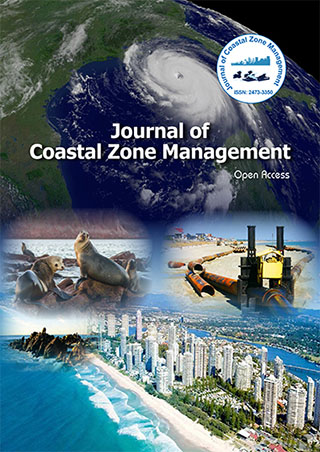Indexed In
- SafetyLit
- RefSeek
- Hamdard University
- EBSCO A-Z
- OCLC- WorldCat
- Publons
Useful Links
Share This Page
Journal Flyer

Open Access Journals
- Agri and Aquaculture
- Biochemistry
- Bioinformatics & Systems Biology
- Business & Management
- Chemistry
- Clinical Sciences
- Engineering
- Food & Nutrition
- General Science
- Genetics & Molecular Biology
- Immunology & Microbiology
- Medical Sciences
- Neuroscience & Psychology
- Nursing & Health Care
- Pharmaceutical Sciences
Designing structures that test and optimize recruitment: Coral restoration using innovative 3D technology
3rd International Conference on Coastal Zones and Oceanography
May 18-19, 2018 Singapore
Abigail Engleman
Florida State University, USA
Posters & Accepted Abstracts: J Coast Zone Manag
Abstract:
Anthropogenic damage is causing a decline in physical coral reef structure. Damaged reef structure and decreasing live coral coverage can consequently limit ecosystem services that coral reefs provide. With over 500 million people directly dependent on coral reefs for food, protection and livelihood, it is essential; we develop effective and sustainable methods to restore coral ecosystems. Coral reef restoration efforts aim to re-establish live coral coverage and increase reef structure to damaged reefs. Traditional restoration practices have severe limitations and show inconsistent success rates. The inability to retain coral larvae on reefs also hinders the sustainability of these methods, without continuous human intervention. Research efforts which prioritize understanding larval dynamics can open possibilities for additional restoration tools in the future. Enhancing live coral on artificial substrates may be one way to propagate larvae and increase coral recruitment in physically degraded reef areas. Deploying specially designed settlement substrates would provide immediate structural complexity to damaged reefs, encouraging fish and invertebrate colonization, while simultaneously facilitating coral recruitment. By testing the role of multi-scale structural complexity on larval settlement, this study identifies characteristics that are beneficial to improve larval recruitment on artificial substrates, adding to the tools available for coral reef restoration. This research uses innovative 3D technology to develop substrates that incorporate multi-level structural complexity to facilitate larval settlement and post-settlement survival. The resulting settlement structures serve as an example of for 3D technology use in marine conservation and coral restoration, specifically. Novel technologies, such as 3D scanning and printing, allow researchers to address questions that were not previously considered, due to experimental restraints and complications and increase ease of addressing some previously considered settlement questions. Methods in this research also showcase the scalability of 3D models and set the stage for this technology to revolutionize restoration in the future. aengleman@bio.fsu.edu
